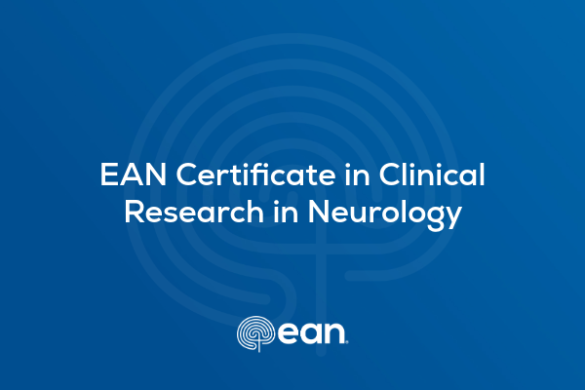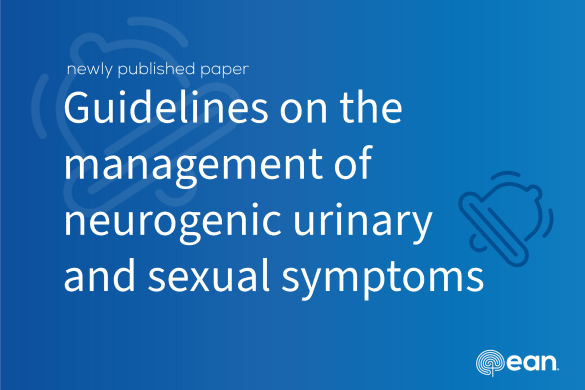Dear Readers,
In this issue, we kindly invite you to read articles which have been chosen for you by our Scientific Panels ALS and frontotemporal dementia , Autonomic nervous system disorders, Higher cortical functions, Movement disorders, Neurocritical care, Neurogenetics, Neurorehabilitation & Palliative care:
- Li W, Lee M-H, Henderson L, et al. Human endogenous retrovirus-K contributes to motor neuron disease. Science Translational Medicine 2015; 307 (7): 307-153.
ALS is a progressive neurodegenerative disease universally fatal: extensive search for exogenous retroviruses in ALS has not been successful even if an ALS-like syndrome can be reversed by antiretroviral drugs in some patients with HIV infection. The Authors explored the expression of endogenous retroviral elements (HERVs) in a subpopulation of ALS patients and, specifically, the expression of HERV-K. This virus was found to be expressed both in the cortical and spinal neurons of ALS patients but not in the controls. Expression of HERV-K or its envelop (env) protein in human neurons caused neurite retraction and beading, contributing to neurodegeneration Furthermore, HERV-K transgenic animals displayed specific upper and lower motor neuron loss. Even more interesting, HERV-K expression was demonstrated to be regulated by the TDP-43 protein that is overexpressed in ALS, forming cytoplasmic aggregates. The Authors demonstrate that an endogenous retroviral protein may contribute to neurodegeneration, raising the possibility that the virus could spread from one neuron to the next and, in the process, lead to neurotoxicity through expression of the env protein. Even if the small sample size of ALS patients did not allow determining the association of a clear phenotype with the HERV-K activation, nonetheless, the study demonstrates the activation of HERV-K in patients with ALS. This activation results in neuronal injury with the selective degeneration of motor neurons. The study is quite relevant, addressing the issue of the HERVs, constituting nearly 8% of the human genome and termed junk DNA. These retroviral sequences are remnants of infections occurred over several million years, resulting in the integration of provirus genomes into the DNA of germline cells. Most HERV proviruses have accumulated numerous nonsense mutations that have rendered them defective. However, it is becoming increasingly apparent that endogenous retroviral sequences may get expressed under select pathological circumstances and ALS, like other neurodegenerative diseases, may be revised with a different view prospective concerning etiopathology, spreading, and, ultimately, therapeutical approaches.
Silani, Vincenzo, MD, Prof
Department of Neurology and Laboratory of Neuroscience
IRCCS Istituto Auxologico Italiano – University of Milan
Co-chair, EAN Scientific Panel ALS and frontotemporal dementia
***
Recently, three notable studies furthered our understanding of Multiple System Atrophy (MSA). These papers provided comprehensive insight into the prodromal phase and the impact of autonomic disorders in MSA:
- Palma JA, Fernandez-Cordon C, Coon EA et al. Prevalence of REM sleep behavior disorder in multiple system atrophy: a multicenter study and meta-analysis. Clin Auton Res. 2015; 25(1): 69–75.
A cross-sectional study of patients with probable MSA from six academic centers in the US and Europe revealed that combined RBD screening and polysomnography that REM-Sleep-Behavior Disorder (RBD) can be found in the premotor phase of the majority of patients with MSA.
- Coon EA, Sletten DM, Suarez MD, et al. Clinical features and autonomic testing predict survival in multiple system atrophy. Brain 2015; 138(Pt 12) 3623-31. [Epub ahead of print]
The systematic retrospective evaluation of the clinical course of MSA in 685 patients showed a median time course between onset and death of 7.51 years. Results showed that falls and incontinence within 3 years of disease onset or orthostatic hypotension within the first year are predictors of an unfavorable outcome.
- Low PA, Reich SG, Jankovic J, et al. Natural history of multiple system atrophy in the USA: a prospective cohort study. Lancet Neurology 2015; 14(7):710-9.
A prospective study in 175 patients, undertaken by Prof. Low and colleagues confirmed the relevance of a severe autonomic failure for an unfavorable outcome of MSA.
Observations highlight the importance of a careful sleep anamnesis including questions focusing on RBD. Patients concerned with RBD should be offered a careful follow up in order to detect MSA early. Autonomic nervous disorders, orthostatic hypotension and incontinence can be found soon as clinical symptoms indicate hypokinetic rigid syndrome or cerebellar ataxia.
Christina Haubrich, MD, PhD
Associate professor of Neurology
RWTH Aachen University
Visiting professor Brain Physics Laboratory
Member of Clare Hall College
University of Cambridge
EAN Scientific Panel Autonomic nervous system disorders
***
Ullman H, Specner-Smith M, Thompson DK, et al. Neonatal MRI is associated with future cognition and academic achievement in preterm children. Brain 2015; 138(11): 3251-3262.
This is an important study, providing evidence that neonatal magnetic resonance imaging allows the early identification of preterm infants at risk for developmental learning disorders. Neonatal deformation-based morphometry and diffusion tensor imaging showed that the regions around the insula and putamen were positively associated with early mathematical skills at 5 and 7 years of age.
Stefano F. Cappa, MD, Prof
2nd Department of Neurology
Ospedale San Raffaele – Vita-Salute San Raffaele University
Italy
Co-chair, EAN Scientific Panel Higher cortical functions
***
- Postuma RB, Berg D, Stern M, et al. MDS Clinical Diagnostic Criteria for Parkinson’s Disease. Movement Disorders 2015; 30(12):1591-1599.
In the October issue of the Movement Disorders Journal, the International Parkinson and Movement Disorder Society (MDS) Task Force on the definition of Parkinson’s disease have produced two seminal papers which propose new set of criteria for diagnosing clinical and prodromal Parkinson’s disease (PD).
The first paper by Postuma and collaborators (Movement Disorders 2015; 30(12):1591), define a new set of criteria for the clinical diagnosis of PD, a major update since the widely used UK Brain Bank diagnostic criteria were originally announced in 1992. The main aim of this publication is to bring the diagnostic process in clinical research to a systematic, uniform approach, even across centers, and also by less experienced clinicians. The criteria could also be used as guidance in the clinical setting. This is an important issue, as diagnostic acuity diverges substantially according to several variables, including follow-up time and level of clinician expertise. The proposed diagnostic process follows the classical two-step approach: parkinsonism should be identified first, and then PD must be assigned as the cause of the syndrome. Two diagnostic categories have been devised: Clinically Established PD (higher specificity) and Clinically Probable PD (which balances specificity and sensitivity). With regard to parkinsonism the paper states how each of the cardinal motor manifestations (e.g. bradykinesia, rest tremor, rigidity) should be assessed. In the following stage absolute exclusion criteria, supportive criteria and red flags are sought, in order to define any of the two diagnostic categories, or exclude PD as the cause of parkinsonism. Supportive criteria include a clear response to dopaminergic therapy, levodopa induced dyskinesias, rest tremor of a limb, and a positive result on a diagnostic test having at least 80% specificity for the diagnosis of PD (i.e. pathologic hyposmia/anosmia, cardiac sympathetic denervation shown on metaiodobenzylguanidine scintigraphy). Absolute exclusion criteria and red flags are extensively described in the original paper. A study designed to test the validity of the proposed criteria against the current gold standard clinical diagnosis is already on the move. It will be very interesting to analyse these results, while further research regarding genetics and neuropathology is also desirable.
- Berg D, Postuma RB, Adler Ch, et al. MDS Research Criteria for Prodromal Parkinson’s Disease. Movement Disorders 2015; 30(12):1600-1609.
The second paper by Berg and collaborators (Movement Disorders 2015; 30(12):1600) proposes for the first time a set of criteria to be used for diagnosing prodromal PD. These criteria have been developed for use in research studies and not in clinical practice; the aim is to define the probability of an individual of being affected by prodromal PD, a condition in which symptoms and signs are present, but are yet insufficient to define the disease. According to these research criteria, probable prodromal PD is defined as a high likelihood (≥ 80%) that prodromal PD is present. The authors have employed a Bayesan naïve classifier as methodology to estimate certainty of prodromal PD; accordingly, the baseline probability of PD is based on age at onset and then the probability is calculated adding diagnostic information from risk and prodromal markers expressed as likelihood ratios. Risk markers include male gender, regular pesticides exposure, occupational solvent exposure, nonuse of caffeine, smoking status, family history for PD, presence of a known gene mutation, substantia nigra hyperechogenicity; prodromal markers include motor and nonmotor clinical symptoms, such as olfactory dysfunction, constipation, depression, and ancillary diagnostic tests such as dopaminergic PET/SPECT clearly abnormal. The research criteria for prodromal PD are expected to be continuously updated, as new markers for estimating the risk of PD will be generated.
Francesca Morgante, MD, PhD
Department of Clinical and Experimental Medicine, Movement Disorder Unit
University of Messina
Italy
&
João Massano
Department of Neurology, Hospital Pedro Hispano/ULS Matosinhos
Department of Clinical Neurosciences and Mental Health
Faculty of Medicine University of Porto
Portugal
EAN Scientific Panel Movement disorders
***
- Smith WS, Browne JL and Ko NU. Cranial Accelerometry Can Detect Cerebral Vasospasm Caused by Subarachnoid Hemorrhage. Neurocritical care 2015; 23(3): 364-9.
Prognosis of subarachnoid hemorrhage (SAH) can be influenced by various conditions. Delayed cerebral ischemia (DCI) following (SAH) is a significant cause of brain injury and disability. Early detection of cerebral vasospasm may contribute to improvementof the clinical condition as a treatable cause of DCI. It is a well known knowledge that if cerebral vasospasm is detected prior to the development of cerebral ischemia, morbidity and mortality can be reduced, or eliminated. The authors highlighted that the reduction in morbidity is dependent on the accurate and early detection of cerebral vasospasm. In this problematic area a new non-invasive, portable method that samples more vascular territory is suggested by the paper has been published on Neurocritical Care. The paper reported that cerebral accelerometry is a newly introduced technology that measures the motion of flowing blood within the brain at the scalp surface compared to TCD.
- Gaieski DF, Nathan BR, Weingart SD and Smith WS. Emergency neurologic life support: meningitis and encephalitis. Neurocritical care 2012; 17(Suppl 1): 66-72.
This second paper that I would like recommend is related to meningitis and encephalitis as emergency condition. These cases often present to the emergency departments as a first step. Early diagnosis, and treatment extremely important to avoid neurological disabilities. This paper has been published on Neurocritical Care.
includes many important subjects like prehospital consideration, initial assesment, meningitis and encephalitis protocol, laboratory assesment, suspicious conditions and treatment approach. Lumbar puncture, different level of white blood cells and various etiological factors has been evaluted and reviewed with this very useful paper with practical algorithms for emergency physicians and neurologists and neurointensivists in clinical practice.
Serefnur Ozturk, MD, Prof
Selcuk University Faculty of Medicine
Department of Neurology
Konya, Turkey
EAN Scientific Panel Neurocritical care
***
- Musolino PL, Gong Y, Snyder JM, et al. Brain endothelial dysfunction in cerebral adrenoleukodystrophy. Brain 2015; 138(Pt 11): 3206-3220.
An important article which helps understand the close relationship between neurodegeneration and neuroinflammation from the perspective of degenerative disorders of the central nervous system (CNS). The authors shed light on the molecular mechanisms of neuroinflammation in X-linked adrenoleukodystrophy (X-ALD), focusing on the dysfunction of the blood-brain barrier and activation of microglia. Interestingly, X-ALD can be considered an example of degenerative CNS disease which can secondarily lead to overt inflammatory changes, in contrast with multiple sclerosis, which is a CNS inflammatory disease secondarily causing degenerative changes.
Ettore Salsano, MD
Dirigente Medico – Neurologo
U.O. Neurologia VIII
Istituto Neurologico “C. Besta”
Via Celoria 11
Milano, Italy
EAN Scientific Panel Neurogenetics
***
- Corbetta D, Sirtori V, Castellini G, Moja L, Gatti R. Constraint-induced movement therapy for upper extremities in people with stroke. Cochrane Database Syst Rev. 2015; 8(10). [Epub ahead of print]
In the last decade, we have seen an increase in efforts to establish evidence based parameters for the practice of neurorehabilitation. This Cochrane analysis represents an effort in this direction.
Neurorecovery continues to varying degrees for months after stroke, offering a new highly promising therapeutic window. In this context, innovative rehabilitation procedures aimed to stimulate recovery after stroke is of paramount importance. There is still no consensus regarding the best type of rehabilitation or the best moment to initiate this.
Constraint-induced movement therapy (CIMT) is a promising approach for recovering abilities in everyday practice. This meta-analysis offers new and unexpected insights regarding the efficacy of CIMT, modified CIMT (mCIMT), or forced use (FU) in the recovery of motor deficit after stroke.
Dafin F. Muresanu, MD, PhD, MBA, FANA
President of the Romanian Society of Neurology
Professor of Neurology, Chairman Department of Neurosciences
“Iuliu Hatieganu” University of Medicine and Pharmacy, Cluj-Napoca, Romania
Chairman “RoNeuro” Institute for Neurological Research and Diagnostic
President of the Society for the Study of Neuroprotection and Neuroplasticity (SSNN)
Co-chair, EAN Scientific Panel Neurorehabilitation
***
- Connolly S, Galvin M and Hardiman O. End-of-life management in patients with amyotrophic lateral sclerosis. Lancet Neurology 2015; 14(4): 435-442.
There is increasing discussion of the role of palliative care in the ongoing care of people with progressive neurological disease. This has been particularly emphasised for patients with amyotrophic lateral sclerosis, as there is no curative treatment and death from respiratory muscle involvement often occurs within 2 to 3 years from diagnosis, although ventilatory support, often by non-invasive ventilation, can extend life.
A paper from Dublin discusses these issues and stresses the need for careful discussion with patients and families of their own wishes for end of life care.
They suggest:
- Education of health care professionals in the benefit of palliative care
- Developing a framework to address moral distress and ethical challenges
- Psychological support for professionals caring for people with progressive neurological disease
- Discussions of end of life throughout the disease progression
- Early recognition of cognitive change – up to 60% of ALS patients may have evidence of cognitive change, with 15% having evidence of frontotemporal dementia
- Greater discussion of advance care planning and advance directives…
All involved in the care of people with ALS would find the discussion useful and challenging. However the principles would apply to all involved in caring for progressive neurological disease, so that we are all more aware of the issues as the end of life approaches and are able to support patients, families and other members of the professional team effectively and maximise the quality of life of patients and family / caregivers and improve care at the end of life.
David Oliver, MD
Consultant in Palliative Medicine
Honorary Reader, University of Kent
Wisdom Hospice, Rochester, UK
Co-chair, EAN Scientific Panel Palliative care










